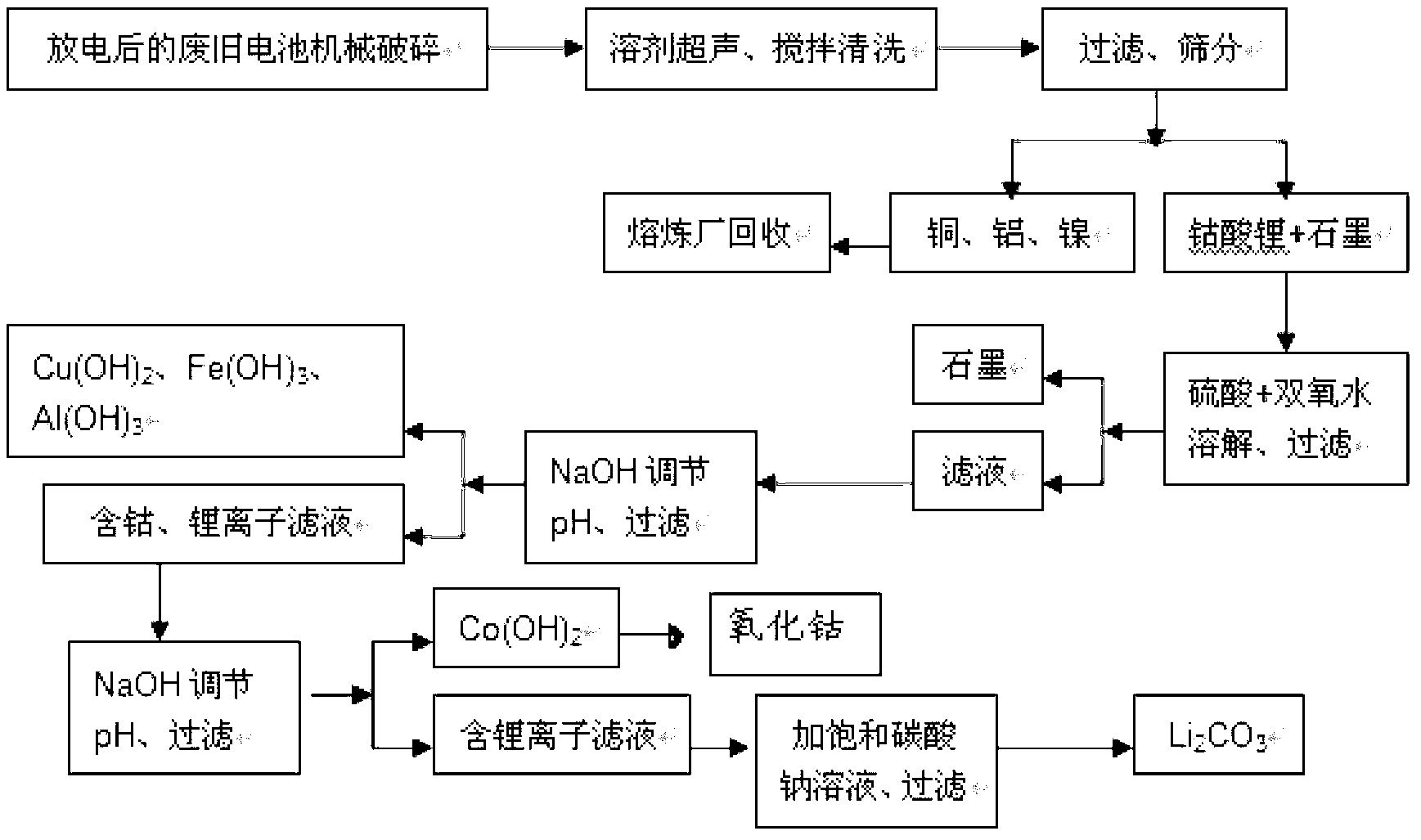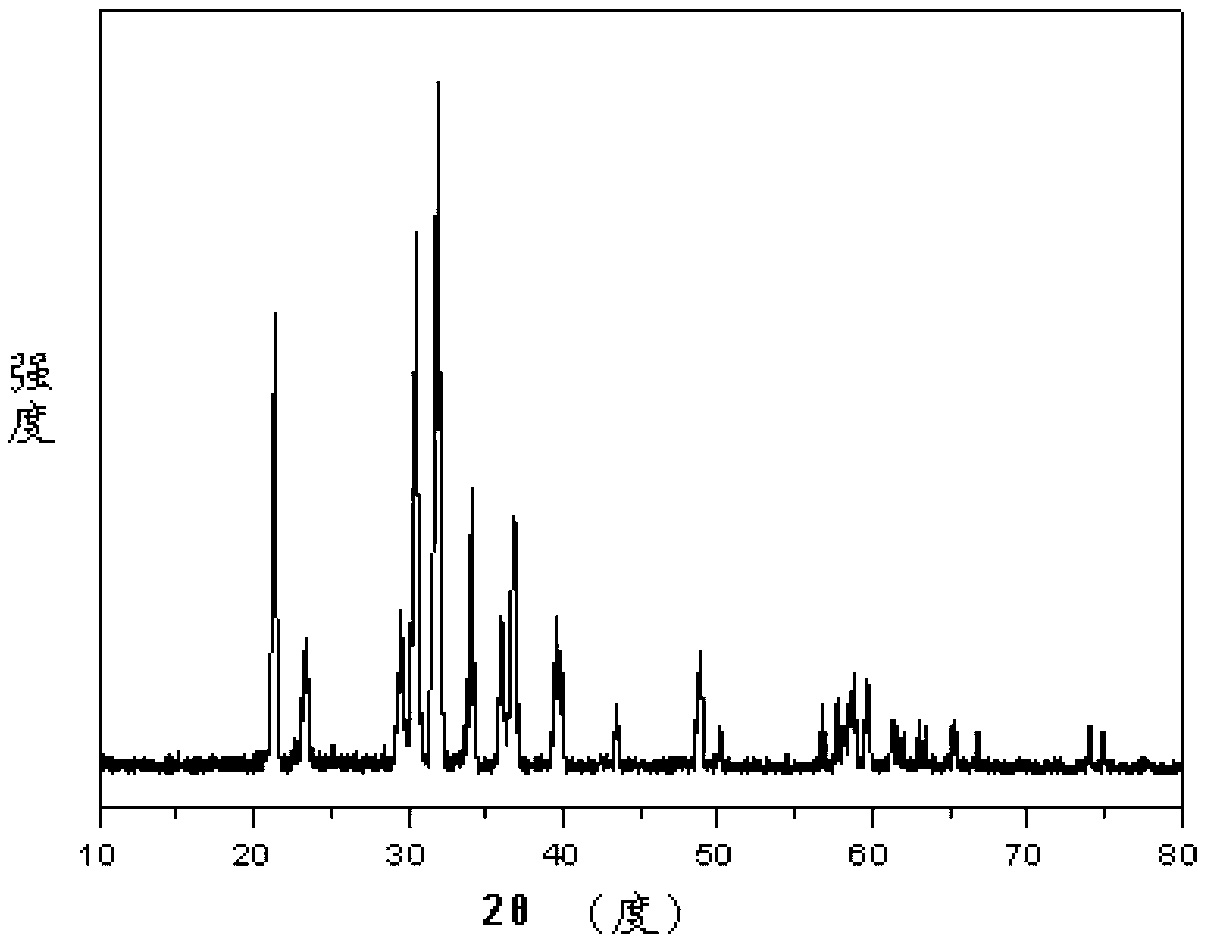Method for recovering valued metals from waste lithium cobaltate batteries
A technology of old lithium cobaltate and valuable metals, applied in the field of waste power battery recycling, can solve problems such as complicated steps, waste of resources, and environmental pollution, and achieve the effects of low cost, environmental friendliness, and simple process
- Summary
- Abstract
- Description
- Claims
- Application Information
AI Technical Summary
Problems solved by technology
Method used
Image
Examples
Embodiment 1
[0030] This embodiment provides a method for recovering valuable metals from waste lithium cobalt oxide batteries, which includes the following steps:
[0031] S1: Discharge the waste lithium cobalt oxide battery and use a shear to remove the outer packaging and shell of the battery, take out the battery, and crush the battery until the area of the battery fragment is less than or equal to 6cm 2 .
[0032] S2: Soak the cell fragments in N,N-dimethylformamide, wherein the solid-liquid ratio of the cell fragments to N,N-dimethylformamide is 20g / L, and at the same time, treat with mechanical stirring and ultrasonic oscillation for 2 hours , to obtain a solid-liquid mixture.
[0033] S3: Filtrate the solid-liquid mixture obtained in step S2 to obtain a filtrate and a filter residue, and the filtrate N,N-dimethylformamide can be distilled and recycled after repeated use. The filter residue is washed and dried with N,N-dimethylformamide, and sieved on a 30-mesh vibrating sieve. ...
Embodiment 2
[0041] This embodiment provides a method for recovering valuable metals from waste lithium cobalt oxide batteries, which includes the following steps:
[0042] S1: Discharge the waste lithium cobalt oxide battery and use a shear to remove the outer packaging and shell of the battery, take out the battery, and crush the battery until the area of the battery fragment is less than or equal to 5cm 2 .
[0043] S2: soak the cell fragments in N-methylpyrrolidone, wherein the solid-liquid ratio of the cell fragments to N-methylpyrrolidone is 60g / L, and mechanically stir and ultrasonically oscillate for 0.5h to obtain a solid-liquid mixture.
[0044] S3: Filtrate the solid-liquid mixture obtained in the step of soaking the cell fragments to obtain a filtrate and a filter residue, and the filtrate N-methylpyrrolidone can be distilled and recycled after being used many times. The filter residue is washed and dried with N-methylpyrrolidone, and sieved by a 40-mesh vibrating sieve. The...
Embodiment 3
[0052] This embodiment provides a method for recovering valuable metals from waste lithium cobalt oxide batteries, which includes the following steps:
[0053] S1: Discharge the waste lithium cobalt oxide battery and use a shear to remove the outer packaging and shell of the battery, take out the battery, and crush the battery until the area of the battery fragment is less than or equal to 4cm 2 .
[0054] S2: Soak the cell fragments in a mixture of N,N-dimethylformamide and N-methylpyrrolidone with a mass ratio of 1:1, wherein the solid-liquid ratio of the cell fragments to the mixture is 100g / L , and simultaneously stirred and ultrasonically oscillated for 3 h to obtain a solid-liquid mixture.
[0055] S3: Filtrate the solid-liquid mixture obtained in the cell fragment soaking step to obtain the filtrate and filter residue. The mixture of N,N-dimethylformamide and N-methylpyrrolidone in the filtrate can be distilled and recycled after repeated use . The filter residue w...
PUM
 Login to View More
Login to View More Abstract
Description
Claims
Application Information
 Login to View More
Login to View More - Generate Ideas
- Intellectual Property
- Life Sciences
- Materials
- Tech Scout
- Unparalleled Data Quality
- Higher Quality Content
- 60% Fewer Hallucinations
Browse by: Latest US Patents, China's latest patents, Technical Efficacy Thesaurus, Application Domain, Technology Topic, Popular Technical Reports.
© 2025 PatSnap. All rights reserved.Legal|Privacy policy|Modern Slavery Act Transparency Statement|Sitemap|About US| Contact US: help@patsnap.com



